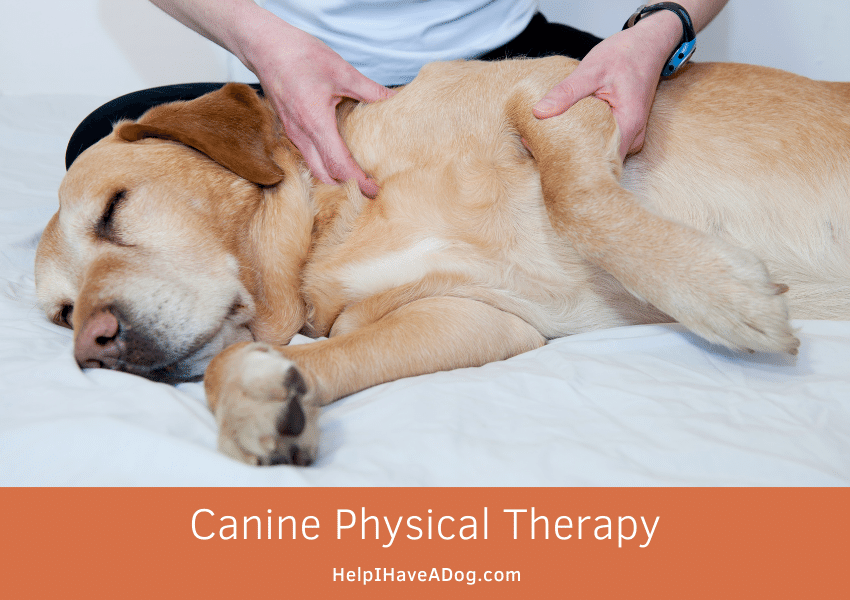Dogs are active animals, and as such, they can benefit from physical therapies to support muscles, flexibility, and pain relief. There are many different types of touch therapy, each with its own focus and strategies for supporting the dog.
Types Of Canine Physical Therapy
Chiropractic Therapy
One common form of canine physical therapy is chiropractic therapy.
In recent years, chiropractic treatment has extended to dogs and is offered as a support for back and joint pain relief that comes from injury, overuse, or arthritis.
The focus of chiropractors is to adjust the dog’s spine, hips, shoulders, or other joints that may need attention.
An external exam may be done on the first visit, as well as x-rays to determine the best course of action.
Chiropractic treatments are usually done over several sessions, adjusting the animal’s body until comfortable mobility is restored.
Acupuncture
Another therapy well-known as a human treatment is acupuncture.
This Chinese style therapy has been used for years as pain relief stimulation in humans. Holistic canine professionals have seen these same benefits in dogs.
Practitioners of canine acupuncture insert very thin metal needles into specifically receptive areas of the dog’s body that will stimulate endorphin release as a response.
These endorphins help dissipate pain and leave the dog more energized and comfortable. Sessions may last for about 10-20 minutes and should not cause any pain.
However, the dog will need to stay still for the duration, which can be a challenge for some animals.
Reiki
Reiki is a lesser-known treatment that is centered around energy healing.
While there is not as much scientific evidence for the benefits of this treatment, human patients often report lower stress levels and a revitalized sense of well-being.
Reiki therapy sessions for dogs are done by healing masters who use gentle touch and hand movements to direct the flow of the animal’s natural energy.
Dogs are often laying down, relaxed, and can fall asleep during sessions.
Benefits can include relief from physical pain or anxiety and a sense of human connection and comfort.
TTouch And Canine Bowen Technique
Two physical therapies that revolve around gentle but firm massaging are TTouch and Canine Bowen Technique (CBT). Both of these therapies include physical pressure on the dog’s body.
TTouch is a holistic massage that uses small circular motions to invigorate cellular regrowth and reduce muscle tension all over the body.
CBT uses a slightly firmer touch on the muscles and tissues surrounding the joints. The techniques used focus on manipulating tendons and tissue that are tight or causing pain for the dog.
Both TTouch and CBT therapies are beneficial for canine mobility and pain relief.
Final Thoughts
It’s important to remember that all dogs may react differently to these various types of canine physical therapy.
If one strategy does not seem effective or comfortable for the animal, another type may be more suitable.
A trained and certified veterinarian should always be consulted before beginning a physical therapy regimen.
They are the most knowledgeable source about the animal’s physical issues, both long and short-term. They also need to be aware of any changes to the dog’s routine, so they can best support them when offering their medical expertise.
A final consideration when introducing physical therapy to a dog’s health routine is to ensure the practitioner is qualified and experienced. Physical touch is an important connection between dog and human. Mistakes or poor technique can not only injure a dog, it can cause fear and anxiety for physical contact with humans.

